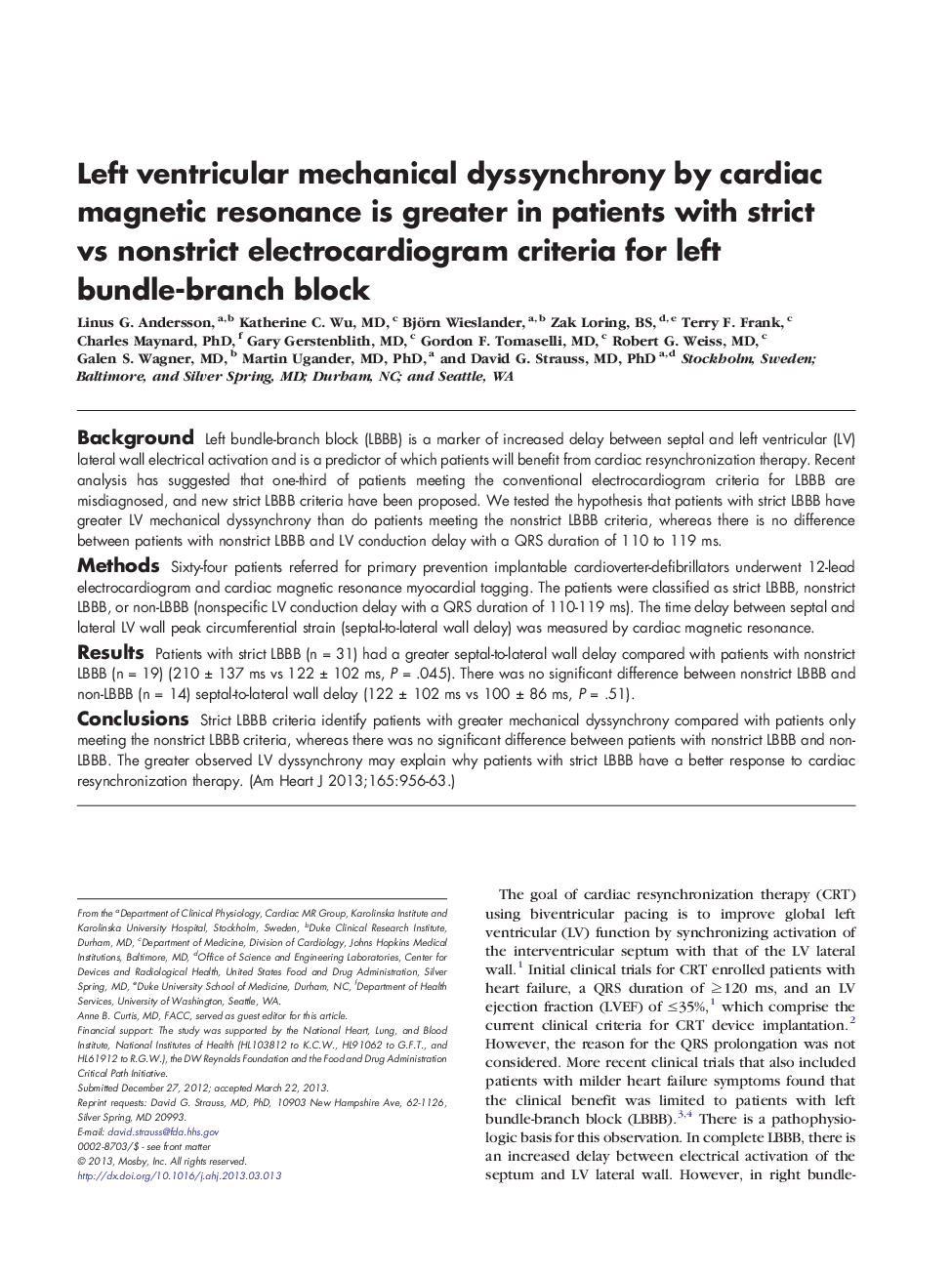| کد مقاله | کد نشریه | سال انتشار | مقاله انگلیسی | نسخه تمام متن |
|---|---|---|---|---|
| 2849404 | 1167696 | 2013 | 8 صفحه PDF | دانلود رایگان |

BackgroundLeft bundle-branch block (LBBB) is a marker of increased delay between septal and left ventricular (LV) lateral wall electrical activation and is a predictor of which patients will benefit from cardiac resynchronization therapy. Recent analysis has suggested that one-third of patients meeting the conventional electrocardiogram criteria for LBBB are misdiagnosed, and new strict LBBB criteria have been proposed. We tested the hypothesis that patients with strict LBBB have greater LV mechanical dyssynchrony than do patients meeting the nonstrict LBBB criteria, whereas there is no difference between patients with nonstrict LBBB and LV conduction delay with a QRS duration of 110 to 119 ms.MethodsSixty-four patients referred for primary prevention implantable cardioverter-defibrillators underwent 12-lead electrocardiogram and cardiac magnetic resonance myocardial tagging. The patients were classified as strict LBBB, nonstrict LBBB, or non-LBBB (nonspecific LV conduction delay with a QRS duration of 110-119 ms). The time delay between septal and lateral LV wall peak circumferential strain (septal-to-lateral wall delay) was measured by cardiac magnetic resonance.ResultsPatients with strict LBBB (n = 31) had a greater septal-to-lateral wall delay compared with patients with nonstrict LBBB (n = 19) (210 ± 137 ms vs 122 ± 102 ms, P = .045). There was no significant difference between nonstrict LBBB and non-LBBB (n = 14) septal-to-lateral wall delay (122 ± 102 ms vs 100 ± 86 ms, P = .51).ConclusionsStrict LBBB criteria identify patients with greater mechanical dyssynchrony compared with patients only meeting the nonstrict LBBB criteria, whereas there was no significant difference between patients with nonstrict LBBB and non-LBBB. The greater observed LV dyssynchrony may explain why patients with strict LBBB have a better response to cardiac resynchronization therapy.
Journal: American Heart Journal - Volume 165, Issue 6, June 2013, Pages 956–963